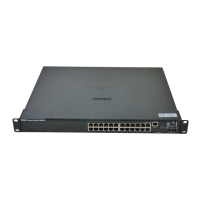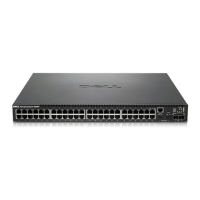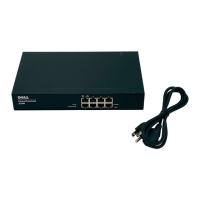l Source Port — Specifies the port from which all traffic will be mirrored to the destination port
l Type — Allows you to select which traffic to mirror to the destination port: Rx, Tx, or Both
l Destination Port — Specifies the port that receives a copy of all traffic that the source port receives or transmits
To add a new mirror session to the Sessions Table, first delete the current mirror session by selecting the session in the table and clicking Remove Mirror
Session. Select the new source port, destination port, and traffic type, and then click Add Mirror Session.
CLI Commands
The following table summarizes the equivalent CLI commands for items in the Ports/Port Mirroring page.
Example
Console(config)#interface ethernet 1/6
Console(config-if)#port monitor ethernet 1/5 both
Console(config-if)#
Address Table
The Address Table page includes links to the following pages:
l Static Addresses
l Dynamic Addresses
l Address Aging
Static Addresses
From the Static Addresses page, you can specify the Media Access Control (MAC) address and port number of systems that are to remain available to the
switch for an indeterminate amount of time.
The following options are available:
l Static Address Counts — Indicates the total number of static addresses configured on the switch
l Current Static Address Table — Lists all static addresses
l Interface — Allows you to select the port or trunk associated with the system you want to set as static
l MAC Address — Allows you to enter the MAC address of a system you want to set as static
l VLAN — Allows you to select the VLAN associated with the interface
To add a new address to the table, select the interface, MAC address, and VLAN, and then click Add Static Address. To delete an address from the table,
select the table entry in the list box, and then click Remove Static Address.

